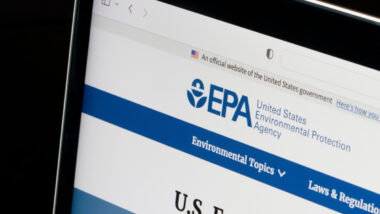Top Class Actions’s website and social media posts use affiliate links. If you make a purchase using such links, we may receive a commission, but it will not result in any additional charges to you. Please review our Affiliate Link Disclosure for more information.
CFPB Overview
Every year, thousands of consumers are financially harmed by the abusive practices of companies that disregard the federal consumer financial laws. The Consumer Financial Protection Bureau is a government agency that works to hold these companies accountable for engaging in unfair or deceptive practices, like certain overdraft fee practices, that hurt consumers.
While the CFPB’s goal is to ensure that the market is transparent and remains competitive and consumers are protected, the agency serves several functions — writing rules, enforcing laws, and taking action against companies that don’t comply with the federal regulations.
The CFPB was established to help protect consumers from financial scams involving credit cards, mortgages, loans, and other financial services or products. Before the CFPB was formed as part of the Dodd-Frank Wall Street Reform and Consumer Protection Act in 2010, there was no one single agency that had regulatory authority to oversee the activities of payday lenders, private student loan companies, debt collectors, mortgage services and other similar non-bank financial institutions. The CFPB provides oversight for these types of financial companies and advocates for consumers.
The CFPB focuses on enforcement, education, and empowerment to help achieve its goal of protecting consumers. The CFPB makes rules, takes complaints from consumers, conducts research, monitors certain financial risks, provides consumers information, and takes enforcement action against financial service companies that fail to comply with the law. It can also impose civil penalties and require financial companies to compensate consumers for the financial harm they suffered.
What is the CFPB’s Regulatory Authority?
The CFPB’s broad regulatory authority over certain financial institutions falls into three distinct categories:
- Supervisory — the CFPB may impose specific reporting requirements on financial institutions.
- Enforcement — the CFPB can take action against companies that don’t abide by financial consumer protection laws.
- Rulemaking — the CFPB can write rules that must be followed by financial institutions.
The scope of the CFPB’s regulatory authority over banks generally depends on the size of the bank. While the CFPB doesn’t regulate the banks themselves, the agency has the primary responsibility for ensuring banking institutions holding $10 billion or more follow consumer compliance regulations. For banks with $10 billion or less, the CFPB shares rulemaking, enforcement, and supervisory responsibilities concerning consumer compliance regulations with the prudential bank regulators.
A good example of the CFPB’s regulatory authority in connection with banks concerns overdraft fees — a prevalent issue that resulted in Americans paying out a total of $11 billion in fees last year to the large banks.
The CFPB’s regulatory authority over nonbanking financial institutions depends on their size and their activities. Despite their size, the CFPB supervises all mortgage companies, payday lenders, and private education lenders to ensure compliance with consumer protection laws. The CFPB also has the discretion as to what constitutes a participant in any of those markets and can supervise a nonbanking institution if it has received enough consumer complaints to believe the company is posing financial risks to consumers.
Unless they engage in specific activities that would fall under certain consumer protection laws, the CFPB generally does not regulate, supervise, or have enforcement authority over auto dealers, insurance companies, retailers, tax preparers, and other similar companies or service providers.
According to the CFPB, it’s enforcement actions have secured more than $12.9 billion in total relief for consumers.
How Does the CFPB Educate Consumers?
On its website, the CFPB provides information to consumers on numerous financial topics so they have the information they need to make informed financial decisions. The agency offers “How-to Guides,” educational tools, and comprehensive information about consumer rights and options for auto loans, bank accounts and overdraft rules, payday loans, credit cards, reverse mortgages, prepaid cards, student loans, savings accounts, money transfers, and other financial topics.
The CFPB also has a Consumer Complaint Database where complaints submitted by consumers can be reviewed.
What is the ‘Know Before You Owe’ Campaign?
To help make sure consumers have the information about their loan options, the CFPB launched a campaign called “Know Before You Owe”. Aimed at assisting consumers in making smart financial decisions, the campaigns centered around redesigning the materials consumers rely on to make critical financial decisions concerning mortgages, student loans, and credit cards.
Significantly, the CFPB also finalized its “Know Before You Owe” mortgage disclosure rule in 2015, which replaced four mortgage disclosure forms with just two that are easier to understand — the Loan Estimate and Closing Disclosure. Additionally, the rule requires that those who are about to close on a mortgage have three days to review their Closing Disclosure so that they have an opportunity to ask questions of the mortgage lender.
How Do You Submit a Complaint to the CFPB?
The CFPB accepts complaints from consumers who believe they’ve been scammed or taken advantage of by a company that offers financial products. Complaints made to the CFPB can involve a wide variety of topics such as unfair checking account fees, payments not being applied to an account, and unfair treatment by debt collectors.
Consumers can submit a complaint online and expect to receive a response from the financial services provider within 15 days. According to the CFPB, 97% of consumers get a response to their complaint.
The CFPB uses the data it receives from the complaints to take action. The agency sends the complaint to the company that allegedly violated a consumer financial protection law for a response. It also shares the data it receives from complaints with state and federal agencies as well as publishes it in the Consumer Complaint Database, without providing identifying information.
Consumers can also make confidential reports through a separate process using a tip line if they have reason to believe a company violated any federal consumer financial laws. These types of complaints, reported by whistle-blowers, are not published and consumers do not have to provide their names.















